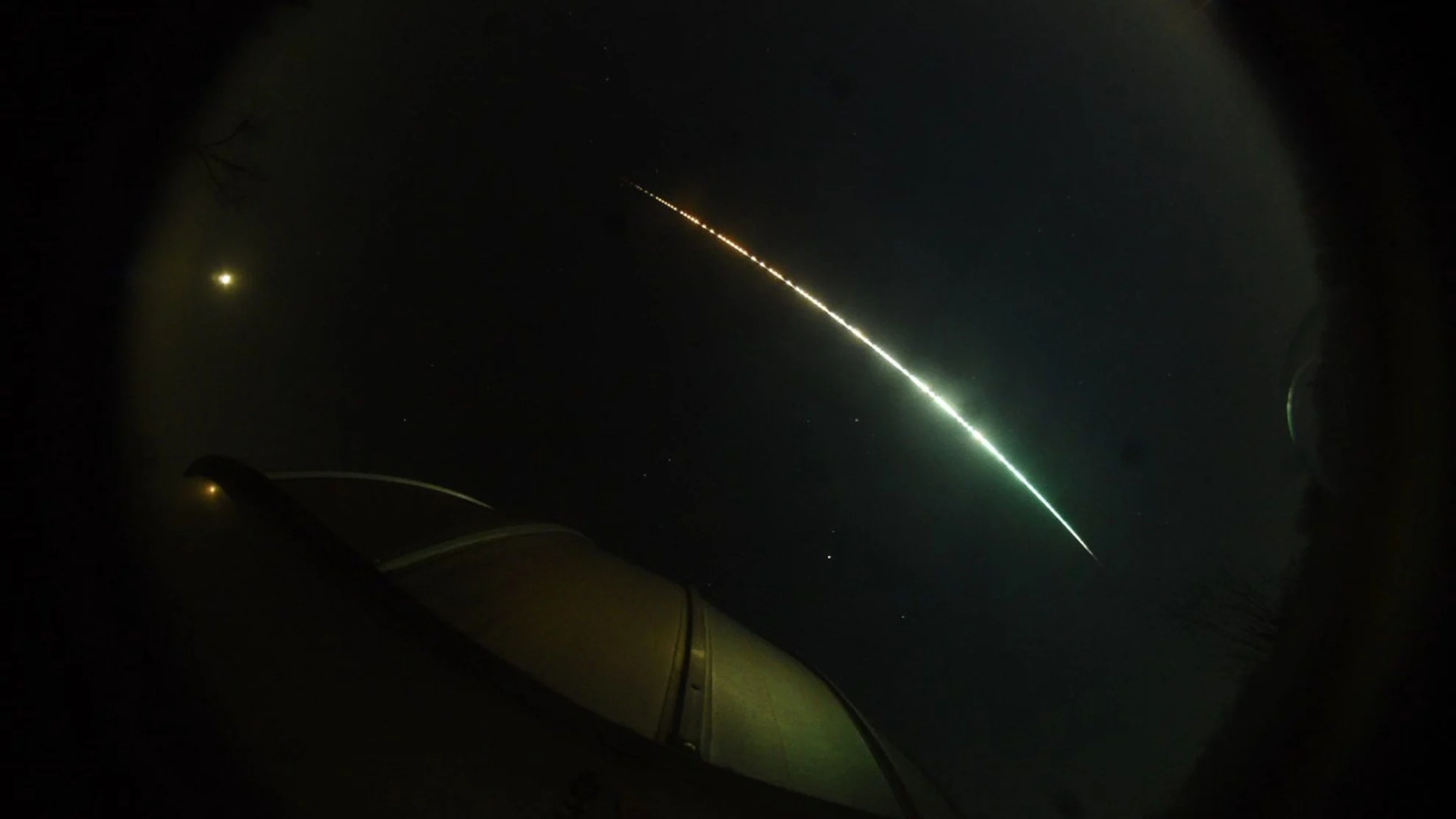
Two bright fireballs blazed over southern Ontario in one day
One of these meteors was caused by a small asteroid that is now only the sixth to ever be spotted before it hit.
Residents of southern Ontario were wow'd this weekend as not one, but two extremely bright meteor fireballs blazed across the sky less than a day apart. The first one caused even more of a stir as it was not only detected hours before it impacted, the exploding asteroid shook houses and woke people up from a sound sleep.
While both professional and amateur astronomers were anticipating an outburst from the Leonid meteor shower early Saturday morning, the universe had a little surprise in store at that very same time.
At roughly 3:25 a.m. EST on Saturday, a small asteroid plunged into the atmosphere just to the west of Lake Ontario and lit up the night as it blazed a trail from Brantford to Niagara Falls.
While most events like this happen completely unexpectedly, such was not the case for this asteroid. In fact, astronomers had spotted this tiny space rock hours before it hit, and it even had a name!
Estimated at just under a metre in diameter, the asteroid was discovered only three hours before impact by astronomer David Rankin at the Mount Lemmon Observatory during a routine survey of the night sky for such objects. At the time, it would have been about 130,000 km away, or roughly one-third the distance to the Moon.
The video below, from Western University's Institute for Earth and Space Exploration, shows views of the fireball and a simulated look at the approach of the asteroid from the space rock's point of view.
Given a preliminary designation of 'C8FF042', it was then officially named ‘2022 WJ1', which indicates that it is the 34th asteroid detected in the latter half of the month of November 2022.
However, 2022 WJ1 holds a more lofty position in asteroid records. According to the European Space Agency, it is only the sixth asteroid in recorded history that was spotted before impact.
As of now, 59 witnesses have reported the fireball to the American Meteor Society. Based on those reports, their estimate of the fireball's path has it stretching from just to the southwest of Hamilton to out over southern Lake Ontario.
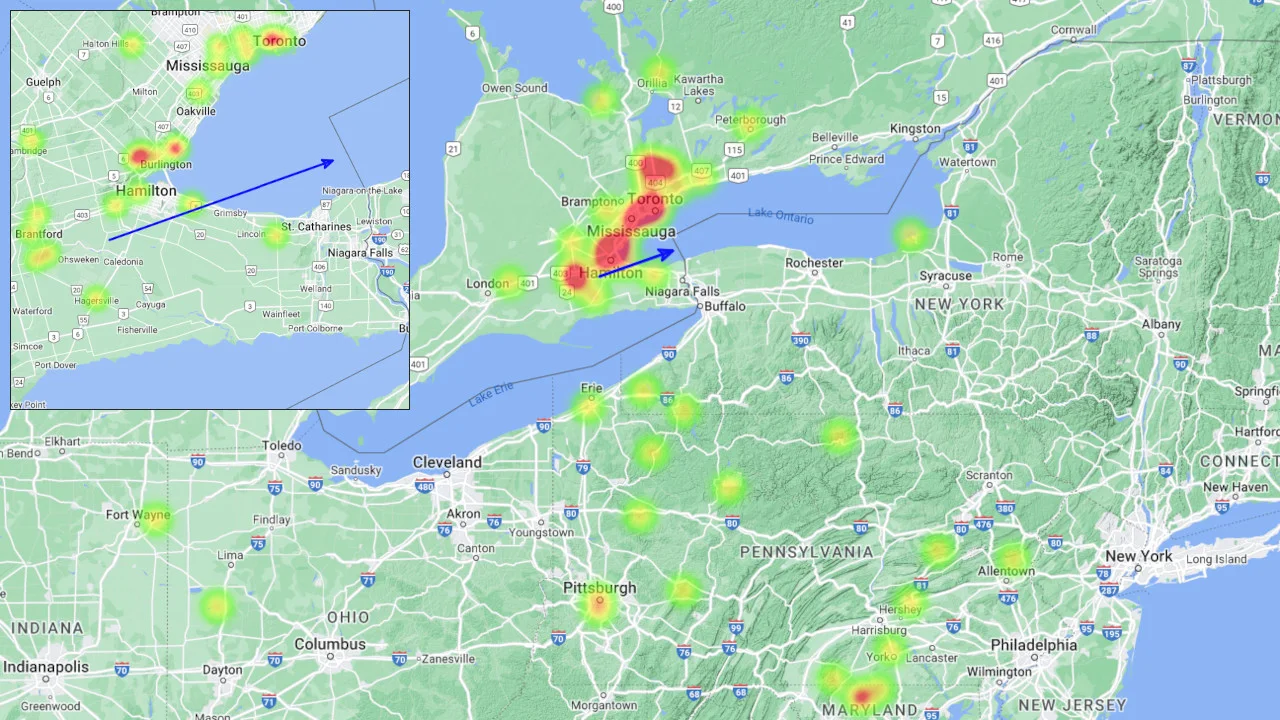
This map shows the estimated path of the fireball at 3:25 a.m. November 19, 2022. The coloured splotches indicate the concentration of viewer reports. Credit: AMS
The low number of reports for such a bright object is owed to the time of night. Also, there were intense snow squalls blowing off of Lake Erie at the time, blocking the view of the sky for many in the area.
Those disappointed with missing this bright meteor did not have to wait long for the next one to flash by overhead.
Less than 19 hours later, at around 10:11 p.m. EST, Saturday night, another fireball lit up the sky, this time to the northeast of the GTA.
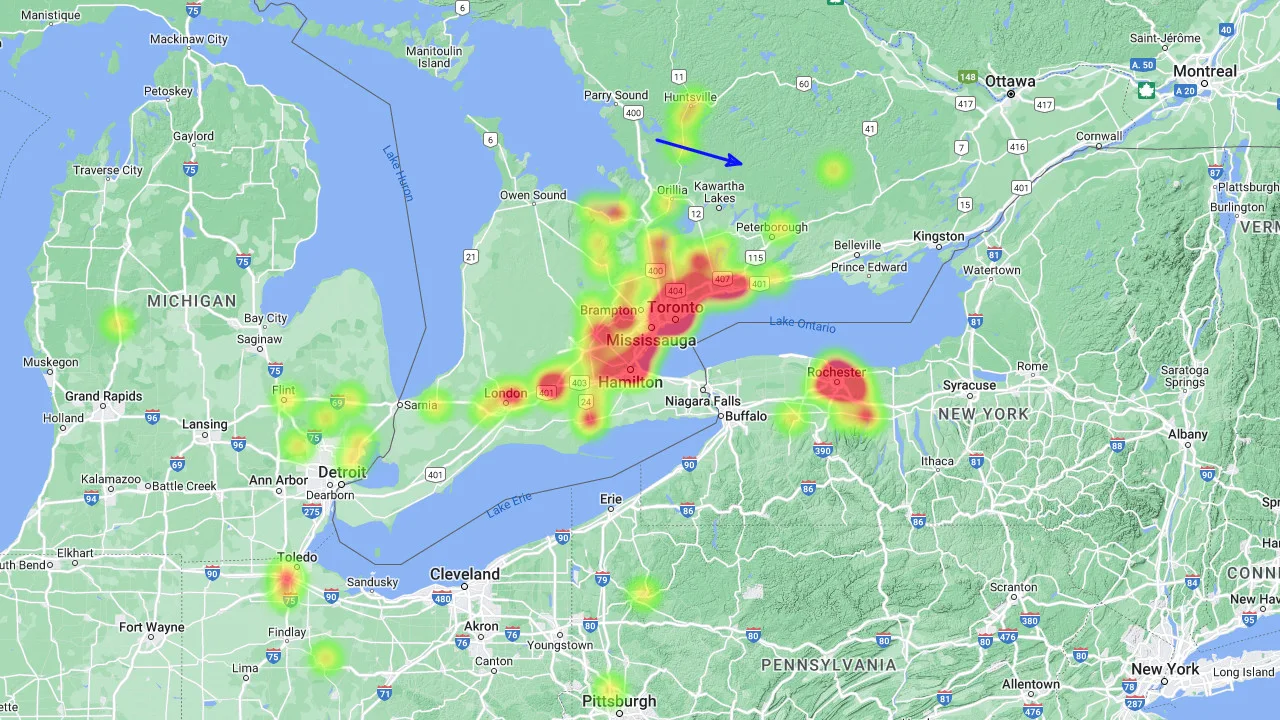
This map shows the estimated path of the fireball at 10:11 p.m. on November 19, 2022. The coloured splotches indicate the concentration of viewer reports. Credit: AMS
Over 130 witnesses have already reported this to the AMS so far.
Toronto resident Nancy Lam captured the fireball on camera. (Note that the bright light seen initially in the video is an aircraft flying through the field of view. The meteor shows up near the bottom of the frame, about 7 seconds in.)
While the first fireball showed up just two hours after the predicted Leonid meteor outburst, it was not a part of that event. This is because any Leonid meteors would have been travelling east to west, while this asteroid's path was roughly west to east.
This applies to the Saturday night fireball, as well, since the Leonid radiant (the location in the sky the meteors appear to originate from) was still below the horizon at that time of night.
Thus, these fireballs were both 'sporadics' — random meteors not associated with any particular meteor shower.
Could there be meteorites??
Based on the path of the Saturday morning fireball and from viewing weather radar from the area at the time, NASA says that meteorites may have fallen over Grimsby, Ontario.
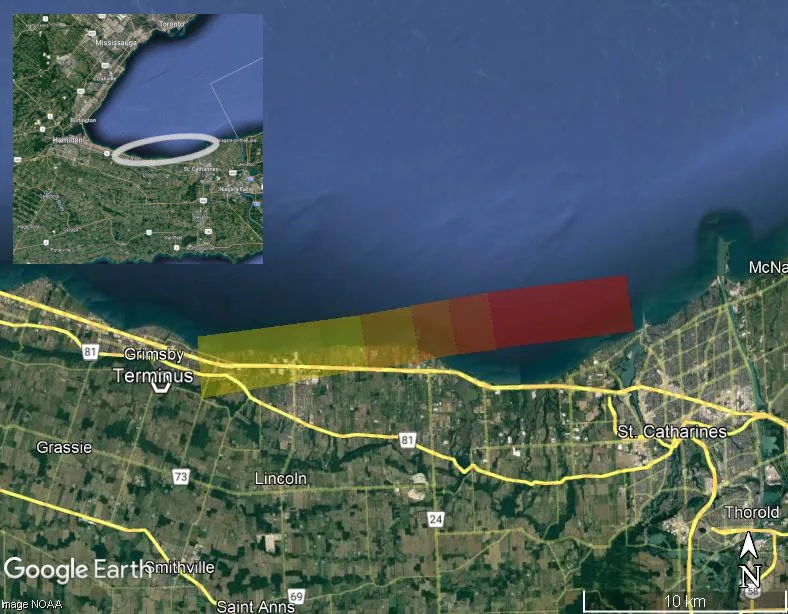
This map shows the possible location of meteorites from asteroid 2022 WJ1. The coloured rectangles indicate the potential size of the meteorites — from around 1 gram (yellow) to 10 kilograms (dark red). The inset map, top left, gives a broader view of the location for perspective. Credit: NASA/Google/Scott Sutherland
"We know from camera records and weather radar which tracked falling debris from the fireball that meteorites almost certainly made it to the ground near or east of Grimsby," said meteor expert Peter Brown from Western University in London, ON. "What we need now to complete this story is to recover some of these rocks and find out what kind of material made up asteroid 2022 WJ1," said Brown. "This is very much like a sample return space mission, but in this case the sample fell on us."
Related: Got your hands on a space rock? Here's how to know for sure!
If this estimate is correct, any meteorites that fell on land would be small fragments of the larger rock. Depending on when they broke away from the main mass, they could be smooth or still have sharp edges from when they fractured off.
At least one side of the meteorites would have the characteristic dark 'fusion crust' that gets burned onto meteoroids as they flash through the air. The other side(s) could be a lighter colour or have a different texture, as they would have been inside the asteroid and thus protected from the heat.
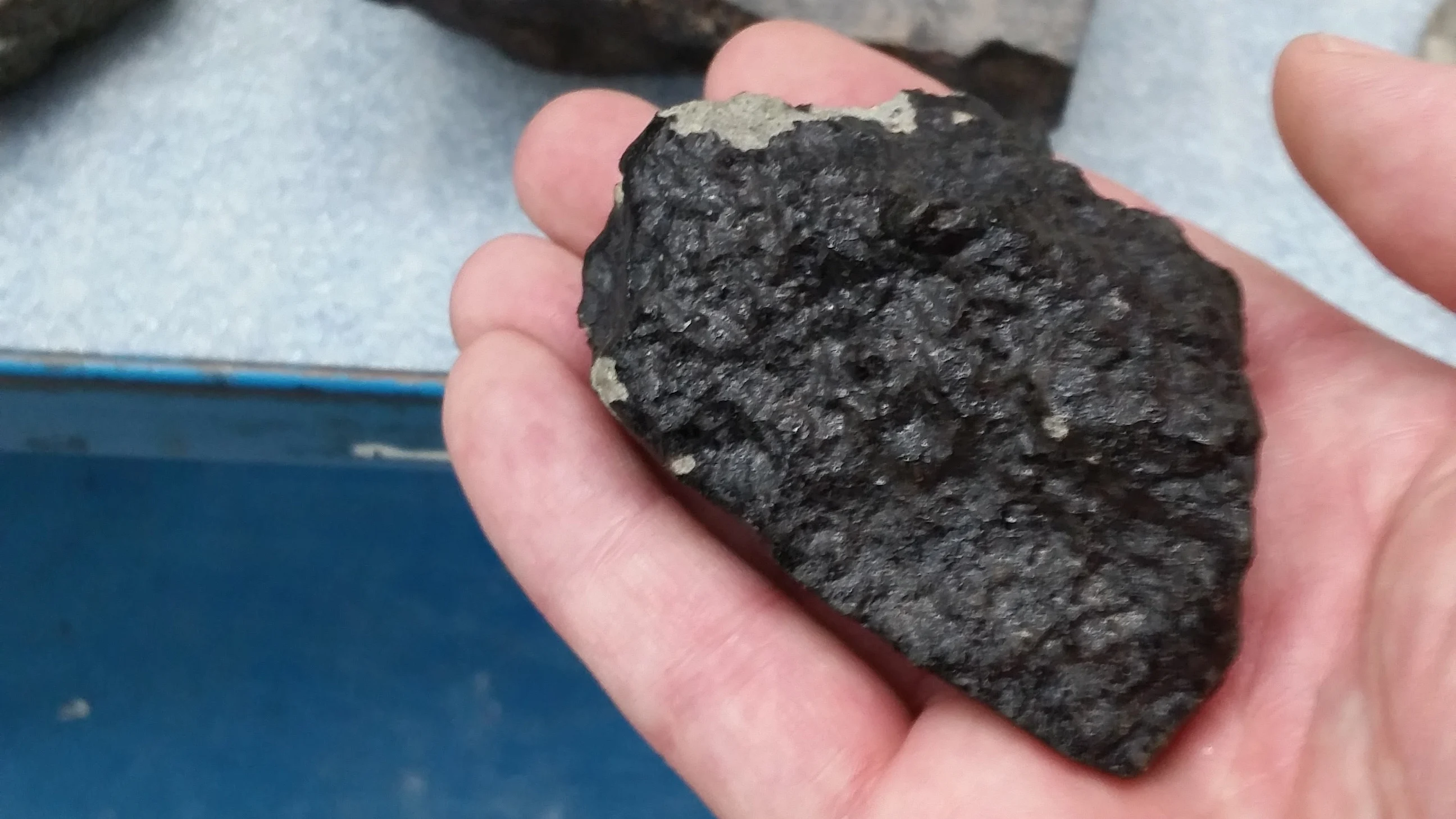
This fragment of the Tissint Meteorite, currently at the Royal Ontario Museum, displays the dark fusion crust that forms on the outside of meteorites, as well as the lighter material underneath the crust. Credit: ROM/Scott Sutherland
Note that the meteorites would have been cold when they hit the ground, so there would be no sign of heating or burning. They may have caused a slight indentation in any snow on the ground. Given the 'strewn field', these fragments could show up anywhere along that line — on the road or side of the road, in backyards or fields, and on roofs or in gutters.
If looking for these treasures from space, note that by Canadian law meteorites belong to the person who owns the land they are found on. Please get permission from the landowner before searching on anyone else's property. Meteorites found on public land (roads, parks, etc.) can be collected by anyone, though.
Also, while meteorites are harmless, they should be handled with care. Meteor scientists recommend wrapping them in aluminum foil and sealing them in a ziplock bag for protection. That way, they can be preserved for scientific study.
Watch below: Why NASA sent a vending machine-sized probe to smash into an asteroid
As this is apparently the only asteroid detected prior to impact that fell in a heavily populated area, these meteorites may be highly sought after, by the scientific community and by collectors. So, if you find any, be sure to alert the Royal Ontario Museum and meteor experts at Western University.
"This remarkable event will provide clues about the makeup and strength which when combined with telescopic measurements will inform our understanding of how small asteroids break up in the atmosphere, important knowledge for planetary defence," said Brown.
(Thumbnail image courtesy Western Meteor Group)











